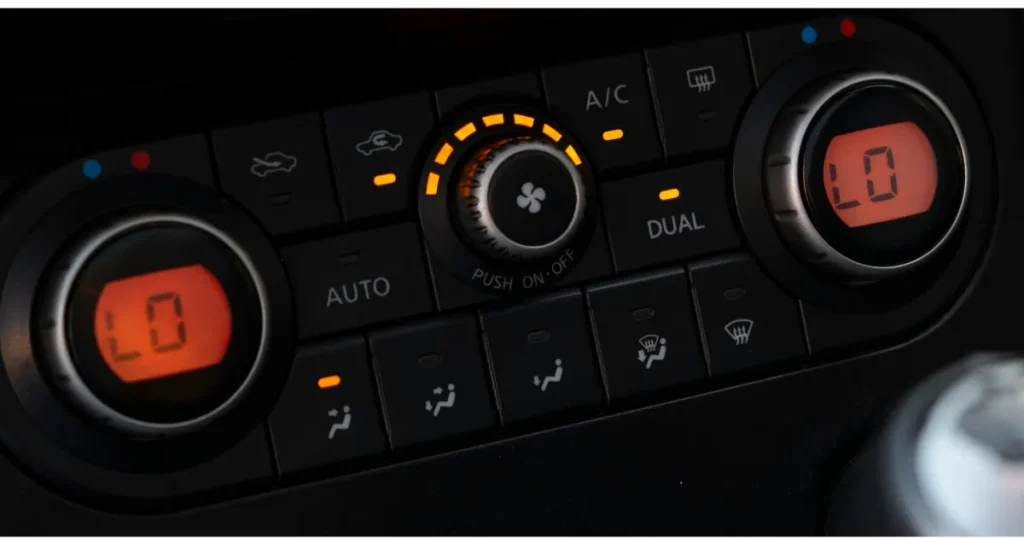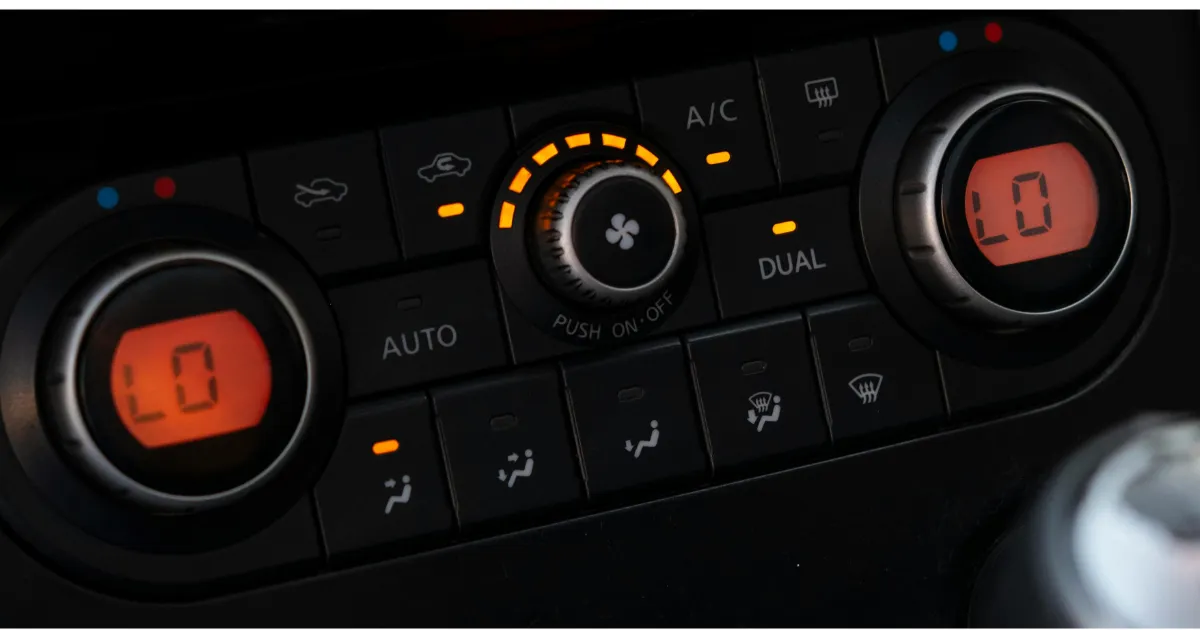The recirculate button is a vital feature in your car’s climate control system. This small button has a significant impact on comfort, health, and the overall efficiency of your vehicle’s air conditioning (AC). By controlling the flow of air, it helps maintain a comfortable cabin environment, especially in extreme conditions like hot weather or polluted areas. Understanding how and when to use it can improve the driving experience and even reduce fuel consumption.
Understanding the Recirculation Feature

The recirculate button on your car’s AC control panel allows your vehicle to stop drawing fresh air from outside and instead recirculate the air already inside the cabin. This feature is particularly useful in cars, trucks, and SUVs during hot weather or when driving through areas with poor air quality.
Why It Matters for Comfort and Health
The main purpose of the recirculation button is not just to cool your car faster. It also enhances driver and passenger comfort by keeping out dust, pollen, and unpleasant smells. Additionally, this helps your AC system work more efficiently, which is important for its long-term health and performance.
Using the Button Properly
To make the most of the recirculate feature, it’s essential to use it in the right conditions. For example, in hot weather, turning on the recirculation button helps cool the cabin more effectively. However, avoid using it for long periods in cold or humid conditions as it can cause window fogging. Knowing when and how to use this feature makes a noticeable difference in your driving experience.
How Does the Recirculate Button Work?
When you activate the recirculation button, your vehicle’s AC system stops pulling in fresh air from outside and starts circulating the air already inside the cabin. This process allows the system to cool the air faster and reduces the load on the AC, making it more efficient.
Controlling Airflow for Efficiency
By controlling the airflow, the air recirculation button ensures that the AC system only cools the air already inside the vehicle rather than constantly drawing in hot air from outside. This not only improves the efficiency of the system but also keeps the cabin cool in hot weather or when stuck in traffic.
Key Benefits of Using the Recirculate Button
Using the air recirculation button improves your AC system’s performance by reducing the strain on the system. It helps keep pollution, bad air, and smells from entering the cabin. This also helps to keep the air-filter cleaner, improving the air quality inside the vehicle. In cold weather, it can still be beneficial to circulate the air to maintain warmth inside.
Additionally, the recirculation function reduces the strain on your car’s AC system, which in turn helps to save fuel by making the cooling process more efficient. The system doesn’t have to constantly cool hot or polluted air from outside, thus reducing fuel consumption, especially in traffic jams or extreme weather conditions.
When Should You Use the Recirculate Button?
Using the recirculate button is particularly beneficial in hot weather to help your AC cool the cabin quickly. When the temperature rises, this feature ensures that your air conditioning system works efficiently without needing to draw in hot outside air. It’s also useful in situations like heavy traffic, where it helps reduce the intake of external contaminants and keeps the air inside cleaner.
During Hot Summer Days for Faster Cooling
On hot days, using the recirculate button helps your car’s AC system cool the vehicle more quickly by recycling the air inside the cabin. This reduces the load on the AC and can lower fuel consumption as it doesn’t have to cool hot air from the outside.
In Heavy Traffic to Avoid Exhaust Fumes
In areas with poor air quality or when driving in heavy traffic, the recirculate button helps to keep the bad air out by closing the vents and circulating air within the cabin. This prevents harmful fumes from entering the vehicle, improving comfort.
When Driving Through Polluted or Dusty Areas
When driving through polluted or dusty areas, pressing the air recirculation button prevents contaminants from entering the vehicle. By closing the air vents and recirculating the cabin air, it ensures that the air inside remains fresh and clean.
When Should You Avoid Using the Recirculate Button?
In cold or humid weather, it’s advisable to limit the use of the recirculation button. Continuous use can cause window fogging because moist air gets trapped inside. During winter or cold conditions, it’s best to rely on your car’s heater to manage the temperature and air circulation effectively.
You should also avoid using the recirculation mode for extended periods as it reduces the volume of fresh air in the cabin. This can lower the oxygen content, leading to drowsiness, which is a dangerous condition for the driver.
In Cold or Humid Weather to Prevent Window Fogging
In cold or humid weather, the recirculation button can cause window fogging by keeping moist air inside the cabin. It’s better to rely on the car heater system to prevent this issue and improve air circulation.
During Long Drives to Avoid Stale Air and Drowsiness
During long drives, avoid using the air recirculation mode for prolonged periods to prevent the buildup of stale air inside the cabin. This can lead to drowsiness, which is hazardous for the driver. Allowing fresh air to enter ensures a healthier environment and keeps the driver alert.
Does the Recirculate Button Save Fuel?
Yes, using the recirculation button can help save fuel by reducing the workload on the AC system. When the system doesn’t have to cool hot air from outside, it works more efficiently, which saves energy and improves fuel efficiency. Additionally, this reduces the strain on the AC, which helps extend its lifespan.
Can I Use the Button in Winter?
While the recirculation button is useful in the summer, it’s more limited in winter. It helps heat the cabin quickly by circulating the air inside, but constant use in cold weather can lead to window fogging. It’s best to limit its use during winter and rely on your car heater to maintain comfort and air quality.
FAQ
Does the recirculate button save fuel?
Yes, using the recirculate button reduces the workload on your AC system, making it more efficient and reducing fuel consumption. By circulating air within the cabin, it helps the system cool the car without drawing in hot air from outside.
Can I use the button in winter?
While the recirculation button can be used in winter to heat the cabin quickly, its effectiveness is limited in cold conditions. Overuse can cause window fogging, so it’s better to rely on the car heater during this time.
When should I avoid using the recirculate button?
Avoid using the recirculation mode for long periods, especially during cold or humid weather, as it can cause window fogging. It also reduces the volume of fresh air in the cabin, which can lead to drowsiness and reduced alertness.
Does Recirculated Air Make You Sleepy?
Many drivers think the recirculation button could make them drowsy, but that’s not true. When pressed, it closes the air duct in the front of the car, preventing outside air from entering. Instead, the vehicle uses recirculated air, which stays cooled or heated based on the settings you’re using.
I’ve personally used this feature on long drives, and I never felt a drop in oxygen or lack of fresh air. As long as you’re not leaving it on for extreme durations without ventilation, it’s perfectly safe and keeps the cabin comfortable.
Which AC mode is best in a car?
On a hot day, using the recirculation mode helps your AC system work more efficiently. It keeps the air inside the vehicle instead of moving outside air through the unit, reducing stress on the blower motor and air compressor. This not only improves cooling but also boosts overall efficiency.
I always switch to recirculating mode in my car during extreme heat—it cools faster while keeping the cabin comfortable without overworking the system.

